‘If you wouldn’t mind,’ the instructor says, handing out legal documents to all those who enter, ‘signing your life away’
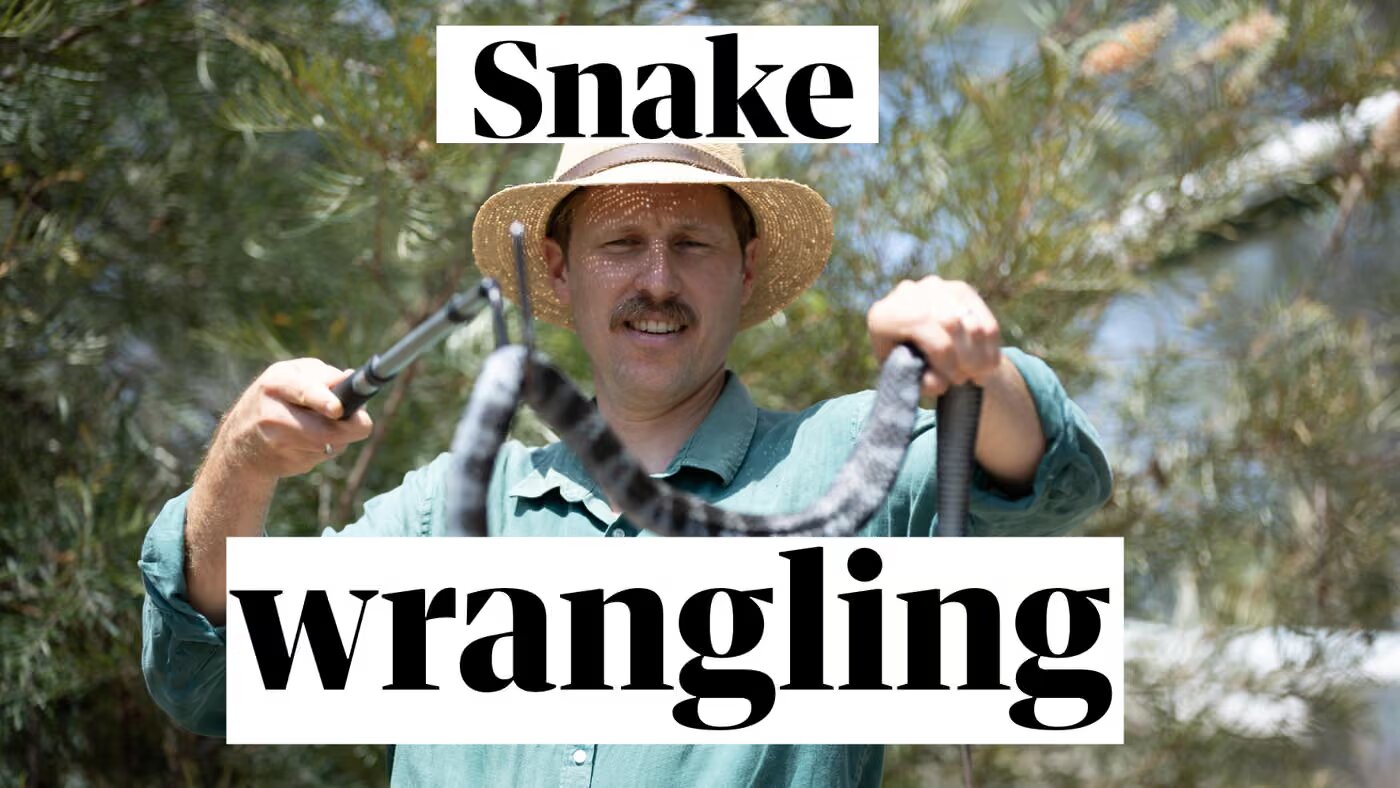
In the backblocks of the Lockyer Valley, more than an hour’s drive west of Brisbane, is a dead end track thick with scrubby eucalypt regrowth.
It is a Saturday morning in late spring and, in this quiet neck of an area which bills itself as Australia’s salad bowl, a car turns down the no through road. One follows another.
The vehicles pass wooded acreages until they come to property with a corflute staked to the turf out the front.
Upon the sign a heraldic shield bears the swirling form of a serpent, its eyes and forked tongue black.
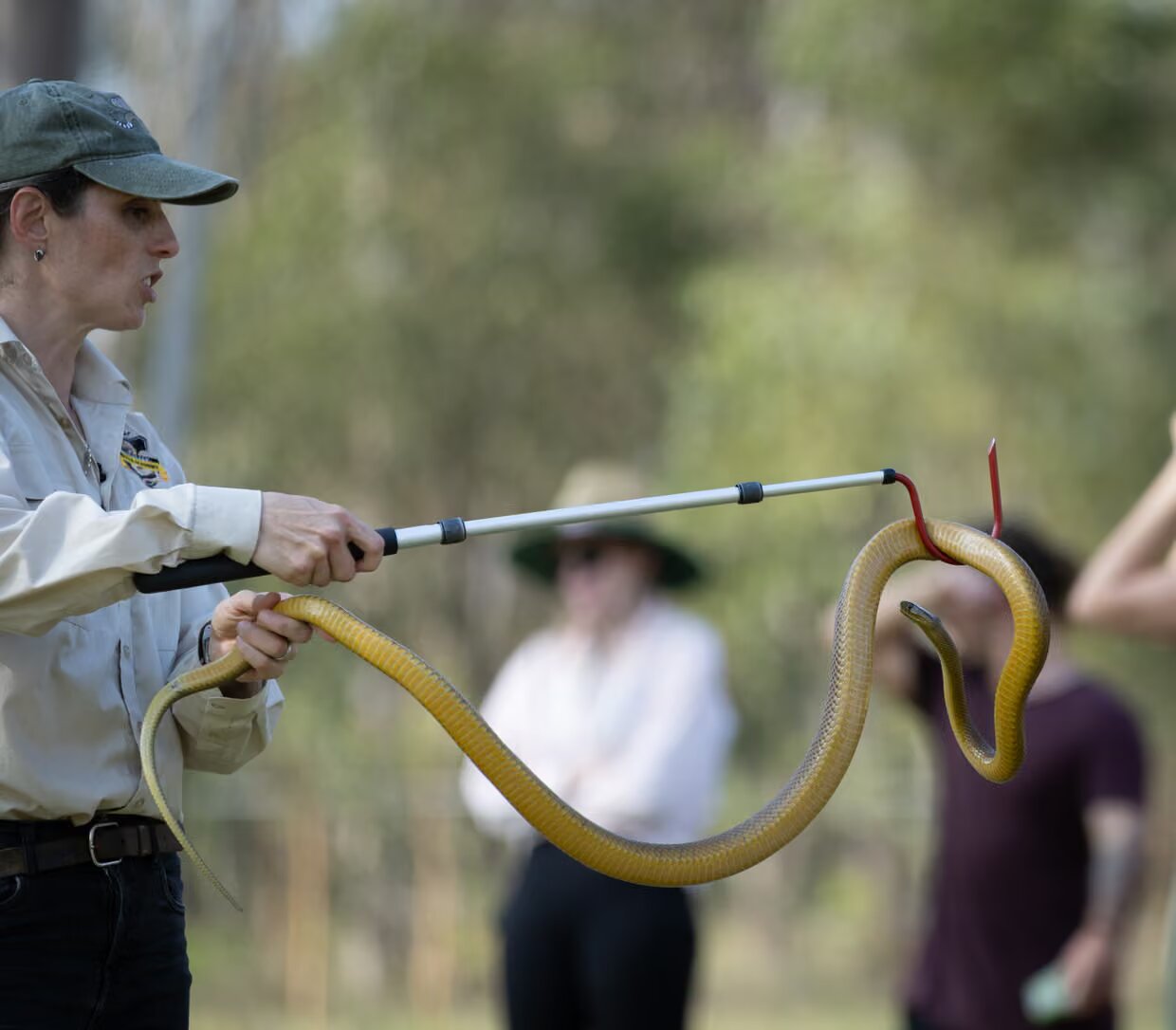
The drivers park and are ushered beyond a timber cottage into a tin shed by a woman with a rattlesnake on her cap. It promises to be a hot and sticky day, but Christina Zdenek wears a long sleeve khaki shirt, tight black jeans, thick socks and heavy boots.
“If you wouldn’t mind,” she says, handing out legal documents to those who enter, “signing your life away.”
So begins another of the Australian Reptile Academy’s venomous snake-handling courses.
And though this is a tongue-in-cheek welcome, the stakes are real.
Participants are also given a workbook on Australian snakes, their toxins and techniques for handling them – which they are cautioned to follow strictly.
“There’s always a death or a very severe injury behind all these rules,” Zdenek says.
Some students will have never picked up a snake before – by day’s end, they will be expected to have caught and bagged 10, culminating with the world’s most venomous: the inland taipan.
Just who on earth, one might wonder, would feel compelled to do that? More and more people, says Zdenek’s husband and fellow reptile wrangler, Chris Hay.
“The number of snake catchers has exploded all over Australia,” Hay says.
“It’s like it’s becoming a fad,” Zdenek adds.
Snakes are no passing interest for this pair of herpetologists. Zdenek completed a PhD on Australian snake venom and has her name on more than 60 peer-reviewed scientific papers. Hay has spent decades catching snakes and extracting venom for university labs such the Australian Venom Research Unit. When the couple holiday, they go overseas chasing bucket list serpents.
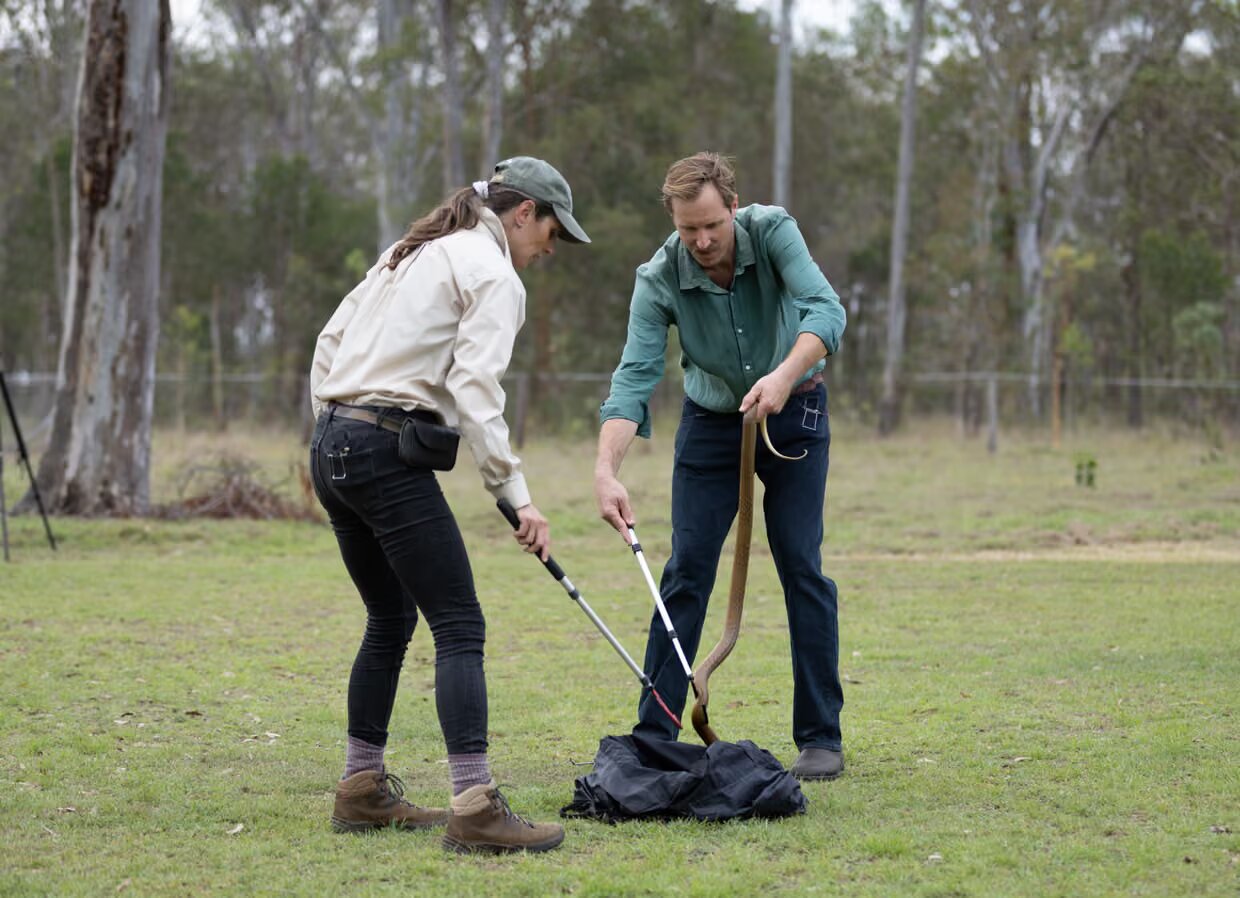
And they are not the only seasoned snakers who have noticed an uptick of interest in their passion.
Julia Baker is better known by the aliases Snake Boss and The Snake Sheila. When the former pastry chef ditched her day job in 2010 to become a snake catcher in Brisbane, it was still a niche enough industry for Baker to make her name with a reality show on Discovery Network’s Animal Planet that screened in 170 countries.
“When I started, there was really only a handful of us … and we were run off our feet,” she says. “Now there are loads and loads and loads. Every two weeks I’ll see somebody new pop up.”
So what is driving this trend – and what type of person wants to handle slippery creatures with lightning-fast reflexes capable of inflicting painful death with a single bite?
“The snakes have not grown in numbers,” Baker says, answering that first question.
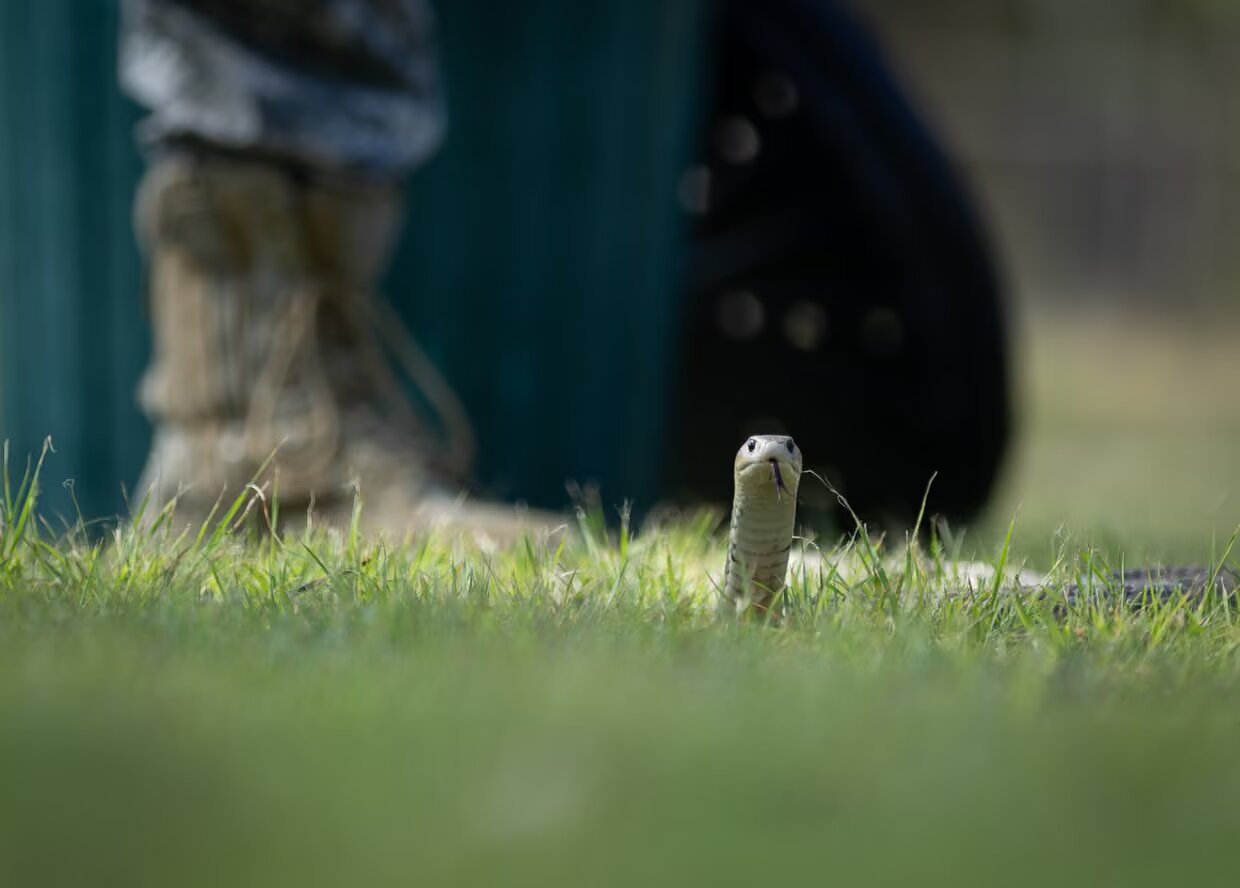
“Fifteen years ago, we didn’t have nearly as many residents. We are putting more and more houses there … the snakes are searching the same areas for food – but now we’ve put a house there and a resident.”
Baker lives in one of the fastest growing regions of Australia, south-east Queensland, where ecologically rich forest continues to be cleared for housing estates.
But the story is unfolding across the country. Zdenek is working on a chapter for a book to be published by the CSIRO in which she looks at how the fear of snakes shapes Australia’s suburbs.
In it, Zdenek tries to take the pulse of the snake removal industry. For a snapshot, the researcher compiled data from just 22 snake catchers across the country – in the spring and summer of 2024-25, they removed 9,863 snakes from private properties.
That number, Zdenek says, barely scratches the surface. In New South Wales, there are 88 registered snake catchers, and probably more in Queensland. Zdenek has extrapolated the figures to calculate that, on a conservative count, more than 17,000 snakes are removed in Queensland alone each year.
Zdenek says there is no data to quantify it – but she estimates the snake-catching industry has grown tenfold over the past decade.
While habitat destruction and urban expansion put more snakes and people on a collision course, modern storytelling technology has fuelled the rise of the snake catcher.
After the release of Snake Boss in 2015, Baker says, others were inspired to follow her dramatic mid-life career change.
“That [show] had a really huge effect,” she says. “A lot of people wrote to me after that and told me: ‘wow, I didn’t know you could do this! What a fantastic job’.”
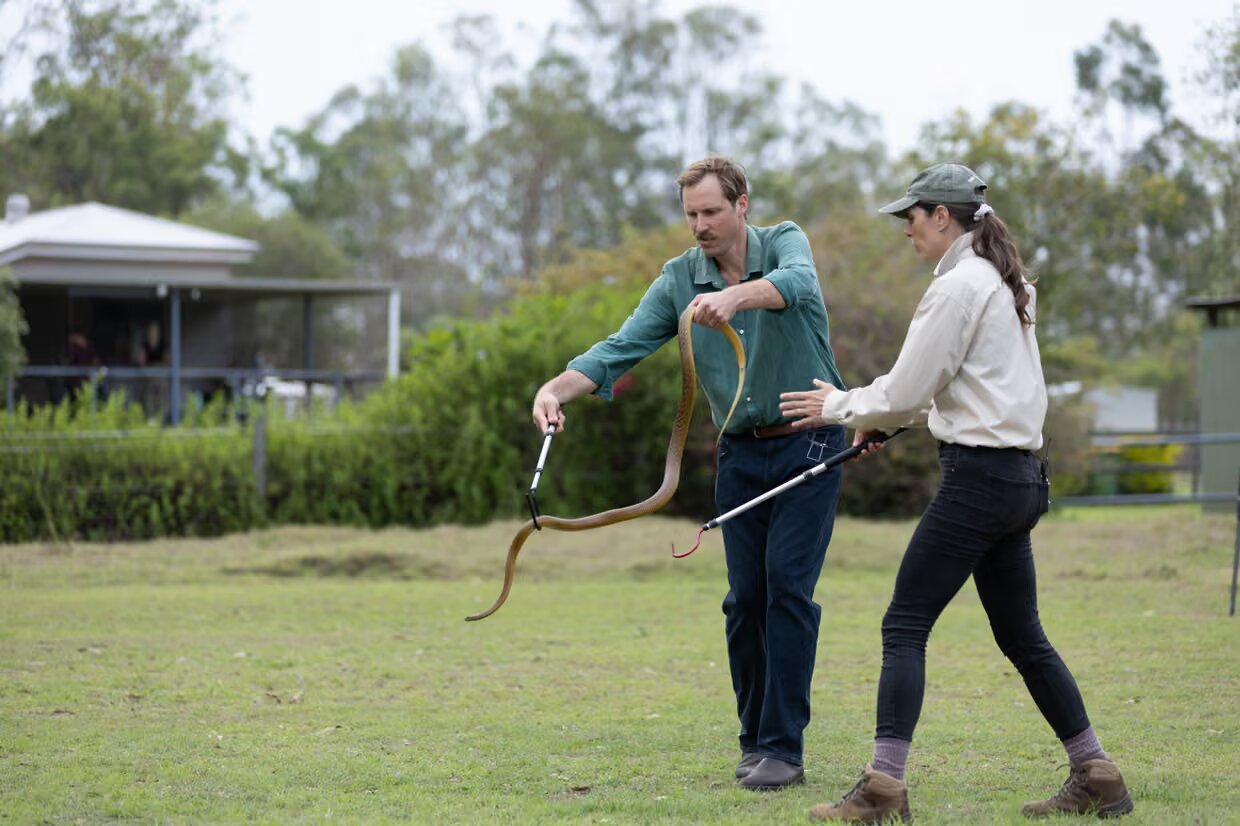
A decade later, would-be snake bosses don’t need cable TV channels for stardom. Snakes have a special hold over the human psyche – from the serpent in the Garden of Eden to rainbow serpents of Aboriginal dreaming, they have inspired humanity’s first and most evocative stories. Snakes make for great content.
So it should come as no surprise that social media has given rise to figures from Melbourne’s The Snake Hunter, to the Blue Mountains’ The Reptile Bloke to the Sunshine Coast’s That Snake Lady – all three of whom offer relocation services.
But it is not just would-be influencers who are interested in getting their hands on scales.
That label might apply to one or two of 14 people at the Australian Reptile Academy in early November at best. Others have more prosaic and practical reasons for taking the course.
Isabelle Erbacher wants to learn what to do if she comes across a python in the chook shed on her acreage in Chuwar, near Ipswich. Krystin Reed, a school administrator, is training to deal with the next whip snake that darts across the oval. Emma Muhovic studies wildlife care with the ambition of being a zookeeper. Others include environmental scientists who might stumble upon red-bellied blacks in pitfall traps, and a retired tree changer whose cup of tea was interrupted by a brown snake.
By day’s end, all will graduate. Should they want to set up their own snake removal business, they are almost there. In Queensland, they will also need a first aid certificate, equipment and two referees to apply for a permit from the state government – the idea being they find a snake mentor to shadow.
Regulation is a state-by-state patchwork, though. In Western Australia they could already be in business. There, no licence is needed to remove a snake from a house.
But the Snake Boss cautions people not to quit their day job – removal work is seasonal, sporadic and not particularly lucrative, she warns.
I’m not just gonna go out on my own and take a brown snake out of someone’s bonnet
Harley Gonzalez
“People need to realise it’s not a full-time job,” she says. “I did other things as well, I did puppet shows. I’ve never just done snake catching, ever.”
Perhaps counter intuitively, Zdenek and Hay hope the lessons they give will lead to fewer snake removals.
The pair worry about the “great unknowns” surrounding this growing industry. What happens to those snakes that are relocated? And what happens to those bits of bush that are having more and more snakes dumped into them?
“There’s no oversight, there’s no national consensus on this massive industry,” Zdenek says.
“It’s in dire need of extensive, evidence-based review.”
And the couple believe that the more people are educated about snakes, the happier they will be to live alongside them.
For all their fearsome reputation, many commonly encountered back yard snakes – pythons, green tree snakes, keelbacks – are non-venomous and pose little or no threat. So a crash course in snake ID would make many a removal redundant.
Even a potentially deadly snake will try to avoid conflict, Zdenek says. It will become accustomed to the habitats of people in its territory and stay out of their way – hence her adage: “better the snake you know”.
“Get used to the snake,” she advises. “Give it a name. Get it used to you and your movements.”
Embrace the snake, Zdenek says, and your property will have “free 24/7 vermin control”. She points to a paper by a biologist, Prof Rick Shine, from last year which estimates a single brown snake eats at least 100 mice a year.
“Would you rather hundreds of rats and mice peeing and pooing everywhere and transferring diseases to us and our pets, and ticks and fleas?” Zdenek asks. “Or would you rather that one snake?”
Finally there is the fact that many preventable snake bites happen to people who attempt to kill or catch a snake. Which is a lesson for which Hay provides ample first-hand evidence throughout the course.
You can get bitten by a snake in a bag, Hay says. It has happened to him twice. A bite does not need to draw blood to envenomate, he cautions. Several snake handlers he knew died from making that mistake. There are some snakes you never want to touch and this is one, he says, lifting the bag on a death adder named Princess. At the age of 21, he entered a three-day coma after being bitten by a pet of the same species.
If Zdenek and Hay’s students didn’t have a healthy respect for the danger in dealing with Australia’s most venomous snakes beforehand, they do when they leave the course.
Like Harley Gonzalez, who took the course for a career change from the construction industry.
“I’ve always wanted to jump on snakes, catch them,” he says afterwards. “Anacondas, inland taipans, you name it, I’ve always been obsessed with snakes ever since I was young”.
But Gonzalez says the course left him feeling “humbled” and would see him take a “more grounded approach” to his snake handling.
“I’m going to get more experience with some people that have been in the industry a lot longer,” he says. “I’m not just gonna go out on my own and take a brown snake out of someone’s bonnet.
“I’ll do that with someone first.”
